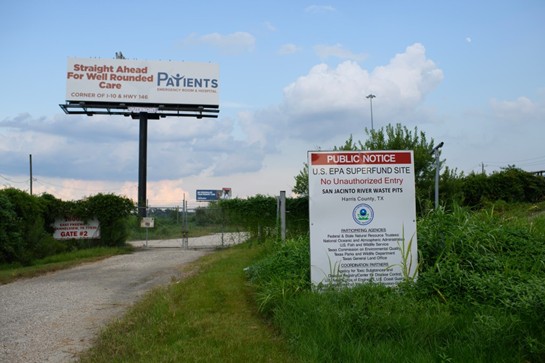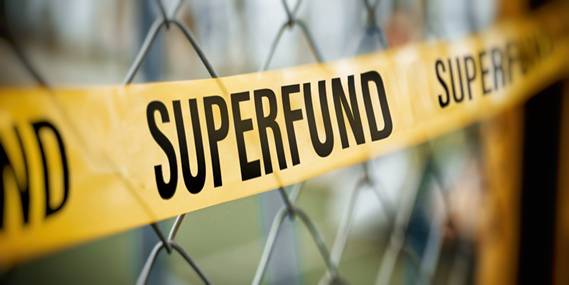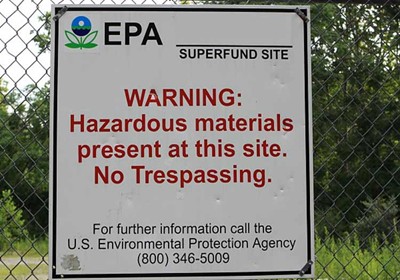Origins: From Love Canal to a National Campaign for Safe Schools
The Center for Health, Environment & Justice (CHEJ) was born out of the Love Canal environmental disaster of the late 1970s, when 20,000 tons of toxic waste were found beneath a New York school and neighborhood. Lois Gibbs, the housewife-turned-activist who led that fight, founded CHEJ to help communities nationwide tackle similar threats. By the early 2000s, CHEJ had turned its focus to protecting children in schools from environmental hazards. It launched the Childproofing Our Communities campaign (often called the “Childproofing Our Schools” program) as a locally based, grassroots effort to address toxins in school environments. Under CHEJ’s guidance, a coalition of more than 70 community groups began organizing to ensure no child’s health was sacrificed for the sake of convenience or cost.
From the start, this movement highlighted a stark truth: children in poor or minority communities often attended schools plagued by pollution and “sick building” conditions. In 2001, CHEJ and partner groups published a landmark report, Poisoned Schools: Invisible Threats, Visible Actions, documenting hazards like toxic dump sites near playgrounds, pesticides in classrooms, and outdated facilities with mold and contaminants. The findings were alarming but galvanizing. Armed with data and personal stories, parents and teachers across the country began to push back, insisting that every child deserves a safe, healthy place to learn.
Building a Movement to Childproof Our Schools
What started as a report quickly grew into a national grassroots movement. CHEJ’s Childproofing campaign provided local activists with organizing toolkits, scientific expertise, and a unifying vision: “We can make our schools safe and healthy.” Community by community, concerned parents and educators stood up to ask tough questions: Is our school built on contaminated land? Does the air our kids breathe contain toxins? Are there harmful chemicals in our classrooms and playing fields? Too often, the answers were unsettling. But the campaign offered solutions.
CHEJ helped communities conduct research and soil testing, and it connected them with allies. In one early victory, activists forced officials to reconsider building a high school beside a cluster of Houston chemical plants. Across the country, families organized to stop schools from being sited on landfills, to demand removal of toxic building materials, and to improve indoor air quality. CHEJ’s Childproofing initiative united these local struggles into a cohesive campaign with national impact. By 2005, it had released Building Safe Schools and Creating Safe Learning Zones reports, complete with model policies to guide school siting and maintenance.
A hallmark of the movement was its grassroots leadership and creativity. CHEJ launched the Green Flag Schools Program, an awards initiative encouraging students to investigate and improve their own school’s environment. From switching to non-toxic cleaning products to starting recycling drives, students earned “Green Flags” for their schools by taking action. Even the U.S. EPA took notice, with senior officials attending student-led events and praising their achievements. This validation showed that even at the highest levels, the work of childproofing schools was seen as a model for positive change.
Renee Blanchard: Grassroots Leadership in Action
At the heart of the campaign’s most pivotal years was Renee Blanchard, who served as CHEJ’s Childproofing Our Communities Campaign Coordinator. A passionate environmental health advocate from Louisiana, Blanchard became the driving force propelling the program forward in the late 2000s. Under her leadership, the campaign’s tone was bold, urgent, and action-oriented. She often expressed disbelief that “there are currently no federal laws to prevent schools from being built in close proximity to toxic sites,” a situation she rightly called unacceptable. Blanchard’s vision was rooted in common-sense justice: no child should have to study in a toxic environment, period.
Blanchard galvanized a broad coalition of allies – parents, teachers’ unions, public health experts, environmental justice groups, and students themselves. She organized a National Safe School Siting Day of Action that brought together groups like MomsRising, the Pesticide Action Network, New York Lawyers for the Public Interest, and community organizations from Appalachia to California. On that day, moms and dads across America wrote letters, held local protests, and shared stories demanding an end to “schoolyards on toxic dumps.” It was grassroots organizing at its finest.
Crucially, Blanchard also worked inside the policy process. When a 2007 energy bill directed the EPA to create national school siting guidelines, CHEJ fought to make sure those guidelines would be meaningful. She and her team didn’t sit back and wait; they kept the pressure on through every delay and setback. When EPA missed its first deadline to release the guidelines, Blanchard convened strategy calls, urged supporters to flood the agency with public comments, and even helped organize a Congressional briefing. Her belief that “it is up to us to engage our family, friends, and neighbors on this issue” underscored her conviction that change starts with community awareness.
One of Blanchard’s key contributions was developing practical tools for activists. In 2009, CHEJ rolled out a comprehensive Safe School Siting Toolkit, packed with sample policies, resolutions, and step-by-step organizing tips. Blanchard championed this toolkit as a way to “give regular people the ammunition they need to win” at the local level. She personally fielded countless calls and emails from parent leaders nationwide, advising them on how to push their school districts to adopt safer siting rules. Through her mentorship and responsiveness, Blanchard empowered others to become leaders in their own communities. Her tenure exemplified the idea that grassroots leadership isn’t about one hero at the top – it’s about catalyzing many new leaders on the ground.
Key Campaign Achievements and Victories
The Childproofing Our Schools effort notched several inspiring victories that demonstrate the impact of sustained grassroots advocacy. Perhaps the crowning achievement was the publication of the EPA’s School Siting Guidelines in 2011 – the first-ever federal guidance on how to safely locate new schools. This victory was years in the making. When the guidelines were finally released, CHEJ called it an extraordinary demonstration of “the power of the grassroots.” For the first time, school districts nationwide had a blueprint to identify environmental hazards before deciding where to build a school.
Equally important were the state and local breakthroughs sparked by the campaign. In Texas, a group of concerned moms formed the Clean Schools Initiative after discovering plans to construct a new elementary inside an old chemical factory. With CHEJ’s support, they helped introduce a state bill requiring environmental quality assessments for proposed school sites. Although it did not pass initially, the effort raised awareness and laid groundwork for future protections. PTAs also stepped up, passing resolutions in states like Alabama and Texas urging safe school siting policies. These actions proved that parents and teachers could lead even when elected officials would not.
The campaign also tackled toxic chemicals already inside schools. Major efforts targeted outdated building materials like PCB-containing light fixtures and PVC products. CHEJ pushed for PVC-free schools and safer alternatives in cleaning supplies. Their advocacy helped drive corporate changes and even won national awards for effective campaigns. At the same time, state legislatures passed green-cleaning laws, often using CHEJ’s reports and checklists as resources. Each of these victories, whether local or national, reinforced the growing norm that children’s health must come first.
Challenges Faced and Lessons Learned
The fight to childproof our schools was not without challenges. Awareness was a constant hurdle, as many school officials initially dismissed environmental concerns as exaggerated. Cost was another barrier, with districts tempted to choose cheaper, contaminated land rather than invest in safer sites. The campaign had to counter this logic with data showing the long-term costs to children’s health and education.
Policy change was slow and frustrating. EPA delays tested the patience of advocates, but persistence paid off. Activists learned that grassroots pressure must be relentless to break through bureaucratic inertia. The campaign also had to confront stark disparities: wealthier districts could often afford remediation, while poorer districts could not. This reality underscored the need for systemic solutions and laws, not just voluntary practices.
Through these challenges, the movement learned to frame the issue as a universal value – every child deserves a safe school. It also proved the importance of coupling personal stories with credible data, and of empowering those most affected to take the lead.
Ongoing Legacy and Inspiration for the Future
Though CHEJ’s Childproofing Our Communities program achieved many of its immediate goals, its legacy continues today. Many of the parent leaders first activated by the campaign are still fighting for safer schools in their communities. Organizations like the Healthy Schools Network and regional coalitions have carried forward its principles. School districts in major cities now require environmental reviews before construction. And whenever new threats emerge, from lead in water to mold infestations, there is a ready network of grassroots defenders to respond.
Within CHEJ, the spirit of the campaign lives on through resources, mentoring, and new initiatives addressing children’s health. Reports like Creating Safe Learning Zones remain essential tools for advocates, while newer projects build on its foundation to address climate resilience and water safety in schools.
Most importantly, the campaign left behind a legacy of inspiration. It showed that ordinary people – parents, students, and teachers – can demand and win systemic change. The story of Childproofing Our Schools is a reminder that the most powerful solutions to environmental injustice begin at the grassroots, and that together we can make safe, healthy schools the norm, not the exception.
Conclusion: Grassroots Leadership for Children’s Health
The journey of CHEJ’s Childproofing Our Schools program – especially under Renee Blanchard’s leadership – stands as a powerful testament to the role of grassroots activism in environmental justice. It transformed scattered concerns into a coordinated force that changed policies and mindsets nationwide. It uplifted the voices of parents and students, showing that those most affected by environmental harms must lead the charge in solving them.
Today, as environmental activists, we draw inspiration from this legacy. The fight is not over – new challenges like climate change and chemical threats continue to affect schoolchildren. But the campaign taught us how to face these challenges: with tenacity, collaboration, and the conviction that every child deserves a safe place to learn and grow.
Sources:
CHEJ newsletters and campaign reports (Everyone’s Backyard 2008–2011), MomsRising blog posts by Renee Blanchard (2009–2010), Education World reporting on school siting and environmental injustice, and CHEJ’s Childproofing Our Communities program materials.




